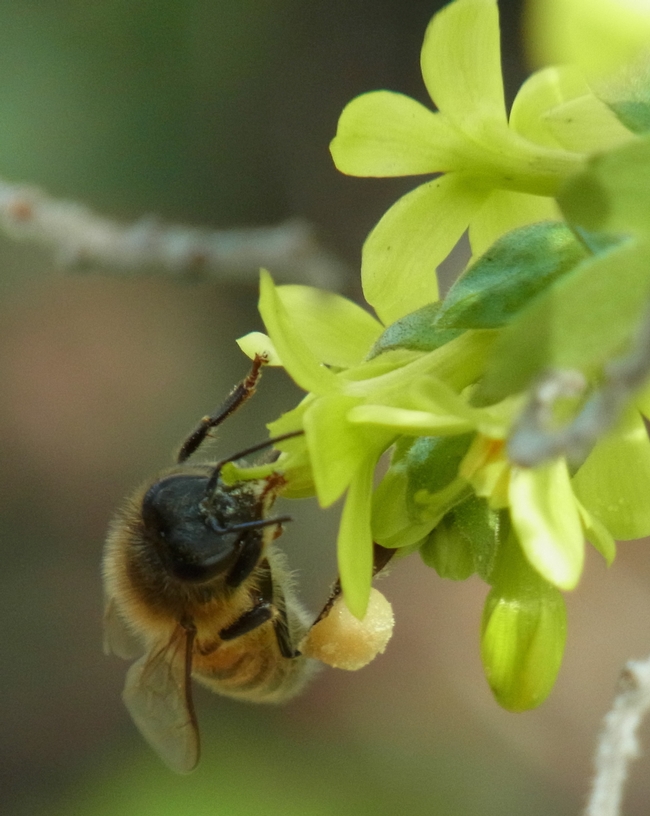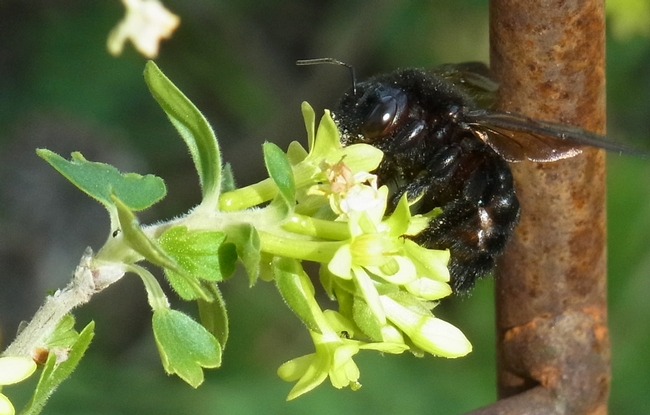From a human perspective, we don't often think of February as an important time for flowering plants, but for bees it's another matter. Honey bees are out foraging when it's sunny and over 55 degrees, while native bumble bees that become active early in the year are in need of pollen and nectar resources to grow their colonies. The solitary bee Osmia lignaria -- an important alternate pollinator in early fruit and nut crops -- is also active.
A group of native plants that provide resources for all these bees with their February flowers are the currants. The first to bloom is chaparral currant, Ribes malvaceum; we grow the cultivar 'Dancing Tassels' at the Haven. This plant starts to flower in January and will continue its showy display through February. In addition to bees, look for lots of hummingbirds on this plant.
Following close behind is fuchsia-flowered gooseberry, Ribes speciosum. Primarily a hummingbird plant, the photo shows how accessible the pollen is for small bees. We don't grow this at the Haven, as it has large thorns that could be a visitor hazard. It can be espaliered up a fence, where the thorns can serve as a living security system. Another consideration when siting this plant is that it copes with our summer heat by losing its leaves in July.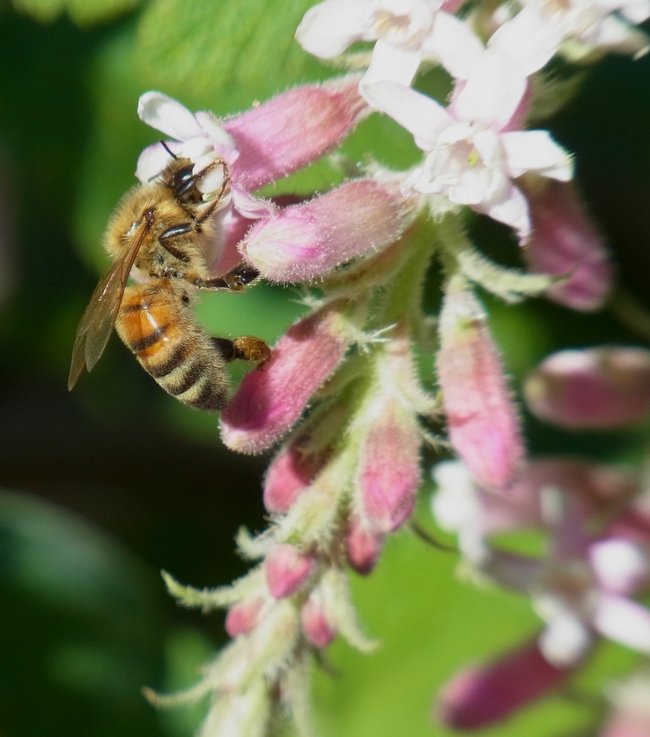
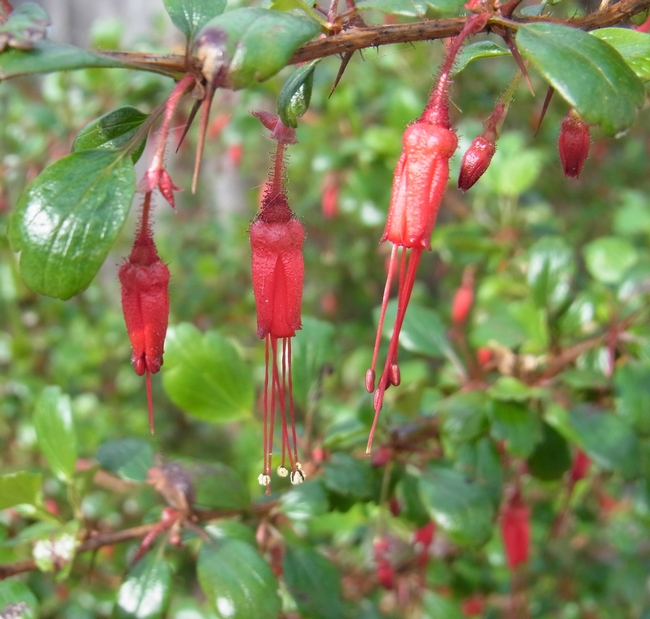
Next to bloom, and the most commonly planted, is the evergreen currant, Ribes viburnifolium. This plant's stems tend to arch over and root where they contact the ground, creating a dense groundcover. I've often seen this plant placed in full sun, which it can't tolerate, leading to leaf scorch and poor growth. A better location is under native oaks or any other dry, shaded spot. Although the flowers are not showy, they are still valuable for bees.
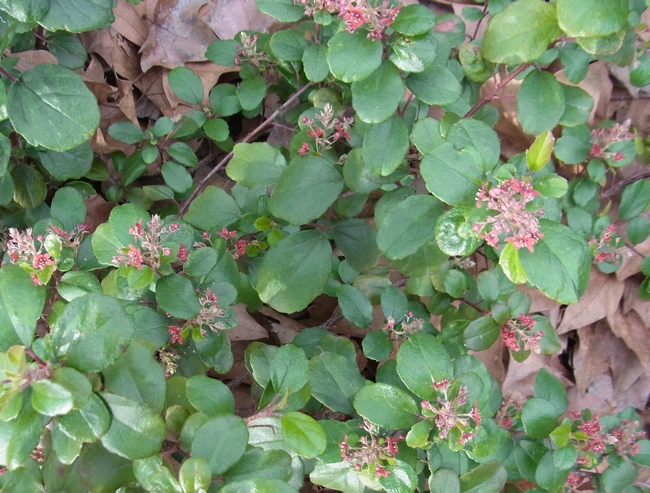
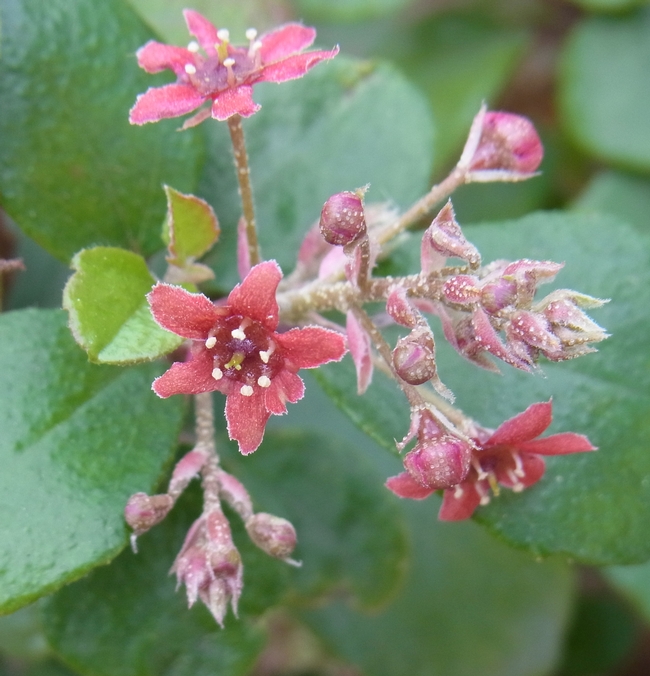
The last plant in this group to bloom is golden currant, Ribes aureum, which will start to flower around the middle of the month. Its bright yellow flowers make it a good, low-water substitute for non-native forsythia. It can tolerate a range of watering regimes; at the Haven we grow it in both a wet area next to a bee waterer and in a dry area under a valley oak. It tends to stay smaller and lose its leaves earlier (around late August) in the dry area but still flowers well. 